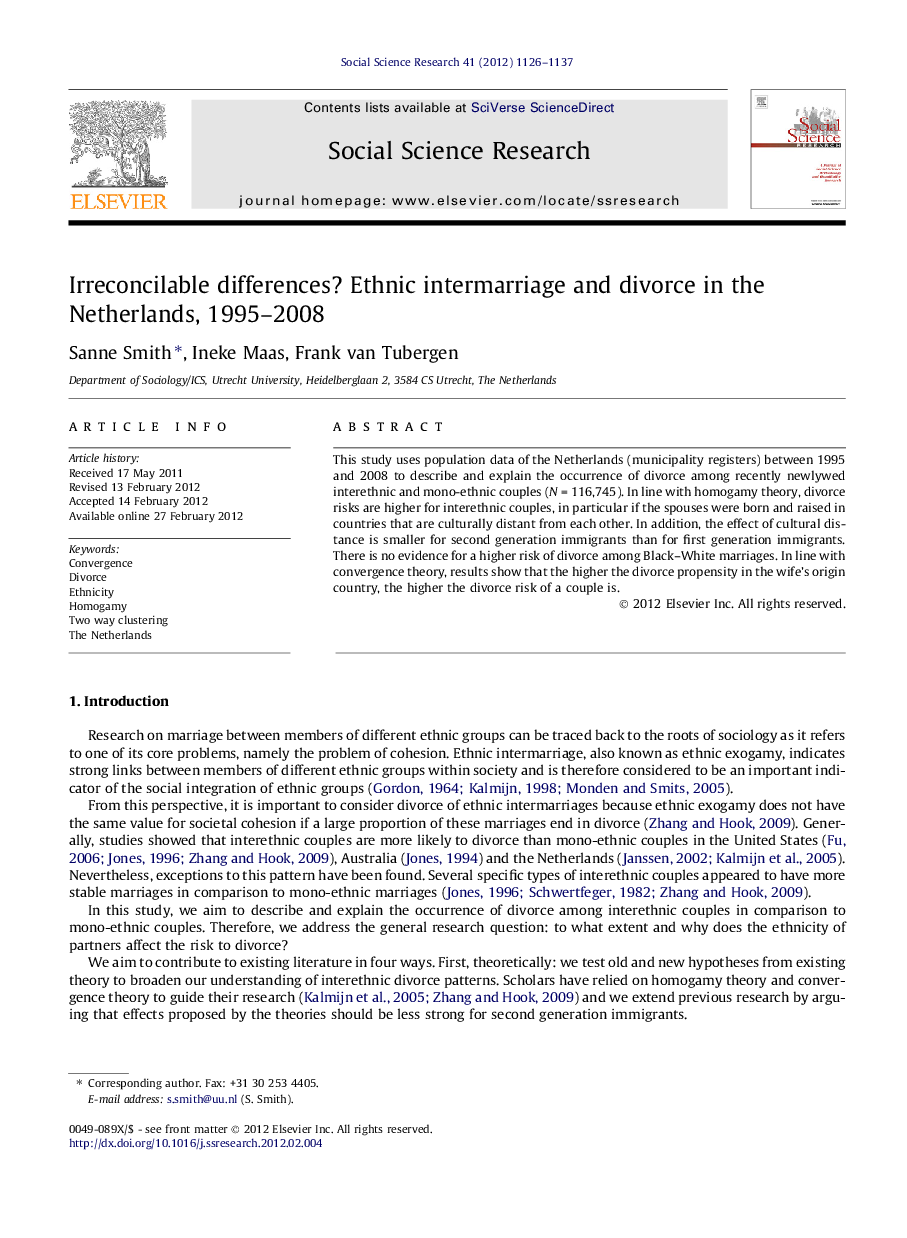| Article ID | Journal | Published Year | Pages | File Type |
|---|---|---|---|---|
| 955939 | Social Science Research | 2012 | 12 Pages |
This study uses population data of the Netherlands (municipality registers) between 1995 and 2008 to describe and explain the occurrence of divorce among recently newlywed interethnic and mono-ethnic couples (N = 116,745). In line with homogamy theory, divorce risks are higher for interethnic couples, in particular if the spouses were born and raised in countries that are culturally distant from each other. In addition, the effect of cultural distance is smaller for second generation immigrants than for first generation immigrants. There is no evidence for a higher risk of divorce among Black–White marriages. In line with convergence theory, results show that the higher the divorce propensity in the wife’s origin country, the higher the divorce risk of a couple is.
► We describe and explain divorce risks among interethnic and mono-ethnic couples. ► Divorce risks are higher for interethnic couples. ► Divorce risks are higher the more culturally different interethnic couples are. ► Cultural distance effect is weaker for second compared to first generation immigrants. ► A higher divorce propensity in the wife’s origin country increases divorce risks.
